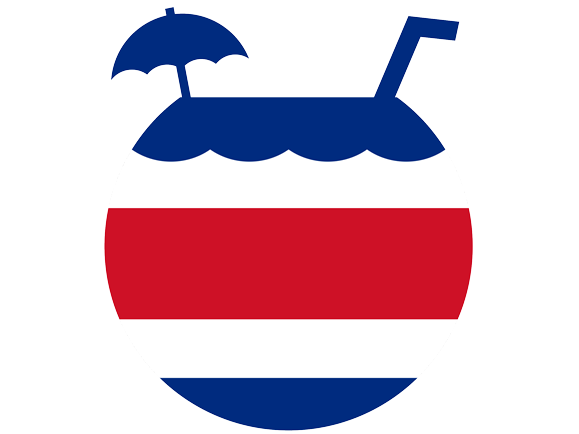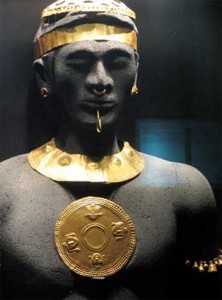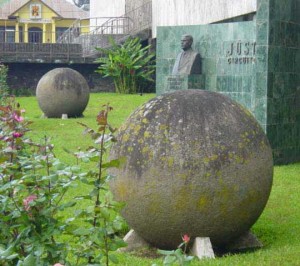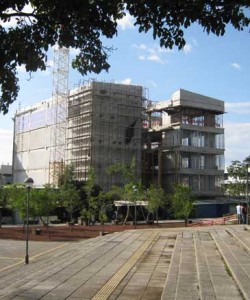Life in CR, Beauty of CR
Costa Rica’s Museums: A Great Way to Spend the Day in San Jose
- By in Blog
We love Costa Rica’s museums. We plan to visit them all, but so far we’ve only been to four of them:
- The Gold Museum
- The Numismatic Museum
- The Children’s Museum
- The Jade Museum
One of the great things about them is that they are small – you can get through them in less than 2 hours. They feature areas among the exhibits where you can sit and watch a video or study a diorama, and get insight into the people and how they lived. Through visiting the museums, we learned a lot about the history and culture of Costa Rica – things we didn’t expect to learn. It made our new home-country’s history more alive for us. This was especially true at the Gold and Numismatic Museums, which are located right on one of the pedestrian boulevards, just below the Plaza de Cultura – a great place for people-watching. And it’s a great way to spend a day in San Jose.
The Jade Museum was interesting too. We learned a lot. We went there on our wedding anniversary. You might think it’s funny to go to a museum on our anniversary, but we had a whole day planned, culminating with dinner at one of our favorite restaurants. We left the museum after about a hour and a half and discovered a festival going on across the street in Parque España and Parque Morizan, which are next to each other. There was an extremely good puppet theater, dance classes, board games, face painting for kids, crafts, people hula-hooping, kids skate-boarding, painters, and more. I even participated in the Latin dance class as you can see in the video below.
We just went with the flow and had a great anniversary celebration. You never know what you’re going to find when you plan a day in San Jose!
We found the Children’s Museum to be a great place for kids of all ages! It’s very interactive, with lots of fun, hands-on exhibits. Don’t be fooled by the name – you would love it too! Plan to spend several hours at this one. There’s nothing boring about it!
Be sure to read the article below to learn a little more about each of Costa Rica’s museums.
Article and photos below originally appeared in A.M. Costa Rica on January 28, 2014. Both article and photos used with permission.
Nation’s wealth includes being rich in the number of museums
By Michael Krumholtz and the A.M. Costa Rica staff
The famous gold man of the Museo Nacional models some of the ornaments that have been found in Costa Rica and presumably were worn by the important pre-Columbian personages.
Though they often get overlooked in favor of beach-side comfort and rainforest exploration, San José’s museums offer engaging and comprehensive insights into the country’s deep well of culture and history. The Museo de Jade’s new home is under construction in what will become a row of four major musuems. All four will be in walking distance of each other. The Museo Nacional, the Museo de Arte y Diseño Contemporáneo, and the Museos de Banco Central can all be viewed on the same, culture-drenched afternoon. Another worth visiting – especially because of its free entry – is the Museo de Arte Costarricense in front of the expansive La Sabana park.
Museo Nacional
Behind the first door of the Museo Nacional visitors are led into a large garden where hundreds of butterflies soar overhead. As they travel up a new two-story ramp and into the courtyard – which boasts some of Costa Rica’s iconic stone spheres – they are given a choice of exhibits, ranging from pre-Columbian history to old barracks and holding cells. In addition, the museum offers a revolving temporary exhibit, which is currently occupied by the “Let’s live democracy” theme until June 1. The museum is in the old military barracks, and the turrets are pockmarked by bullets from the 1948 revolution. When José María Figueres Ferrer abolished the military, he turned the citadel into cultural uses.
Museo de Arte y Diseño Contemporáneo
Only a block away, the museum of art and contemporary design attracts visitors to its home in the old national liquor factory. Featuring numerous short films and audiovisual sights, this modern museum shows off the talents of rising artists from Latin America and the Caribbean. There are five different rooms, as well as the outdoor Molasses Hall, that show off a different style of art through beautiful sculptures and unique presentations.
Museos de Banco Central
The Museos de Banco Central in the city’s center offers people a lesson on the history of Costa Rican currency, including gold from pre-Colombian ages. Presenting the evolution of money from the 1500s to today, it provides an interesting yet simplistic context to today’s global market. Also featured are rows of ceramic African tripods and a look into the lives of the country’s primitive ancestors with the “Costa Rica: Past and Present” exhibit. The name of the facility is plural because it really is four separate museums in a multi-level structure under the city’s Plaza de la Cultura.
Museo de Arte Costarricense
From wooden sculptures of the female body made in the 1930s to socially challenging depictions during the economic crisis in the 1980s, the museum of Costa Rican art provides a key to the country’s vast artistic history. Upstairs, past the winding staircase and open-aired hallway, is the Golden Room which contains on its walls an intricate mural made from bronze stucco that depicts the development of Costa Rica in clockwise chronology. The building that used to be the former La Sabana international airport terminal is a must-see, as visitors can also go nearby to tour La Sabana park and the new Estadio Nacional.
Museo Calderón Guardia
The Museo Calderón Guardia is currently closed until February due to remodeling. It is the former home of Dr. Rafael Ángel Calderón Guardia, the influential Costa Rican president who began important initiatives to help the poor in the World War II era.
The stone balls are everywhere, although archaeologists hope to repatriate most to the southern zone and Finca 6. These are on the lawn of the Corte Suprema de Justicia. Experts say they think that these stones were made locally from rock brought down by the Río Térraba and that the craftsmen or women who made the spheres are the ancestors of the men and women living in the area today.
Museo Finca 6
The stone spheres are everywhere in the Central Valley. They are on the lawns of upscale homes and even on the lawn of the Corte Suprema de Justicia. The Museo Nacional has a respectable exhibit of them, and there is one encased in a protective struture at the entry. But the real mother lode of spheres is at a new museum spun off by the Museo Nacional. This is the famous Finca 6 near Palmar Sur where Costa Rica still awaits the expected designation of the spheres as part of the world’s cultural heritage by the U.N. Educational, Scientific and Cultural Organization. Development officials hope that the new museum will give a boost to the economy of the south Pacific coast. The museum is worth the trip. The outdoor part of the museum features the only two alignments of spheres in their original location. There are two rows of three partly buried. Who actually did that is not known for sure. And archeologist are not really sure what the spheres symbolized. Of course they also have been the subject of some bizarre guesswork by popular authors.
Ecomuseo de la Cerámica Chorotega
For those who seek more sense of pre-Columbian culture, there are the pottery operations in Guanacaste that date back before the Mayan empires. These are the communities of Guaitil de Santa Cruz, San Vicente and las Pozas de Nicoya where about 800 families depend directly or indirectly on the production of pre-Columbian-style pottery. The Museo Nacional says that the residents of the San Vicente area have been making ceramics for the last 4,000 years. That may be conservative. The history of the region can be found in the Ecomuseo de la Cerámica Chorotega de San Vicente de Nicoya. This is one of the more than 20 regional and specialized museums in Costa Rica.
Museo Histórico Cultural Juan Santamaría
Also outside San José is the Museo Histórico Cultural Juan Santamaría which is north of the Parque Central de Alajuela. As the name implies, the museum is heavy with the exploits of the national hero and the Campaña Nacional of 1856 and 1857 when Costa Rica defeated the U.S.filibusters and William Walker who sought to be king of Central America. A display that is on exhibit until Feb. 27 are some 18 works from a collection that depicts historic heroes, democracy and nature.
Museo de Jade
Most of the public museums in Costa Rica are dependencies of the Ministerio de Cultura y Juventud. Not so the Museo de Jade that ended up under the wing of the Instituto Nacional de Seguros, the state insurance agency. The holdings have been moved around from a floor within the institute skyscraper to a niche on the first floor. The new museum that faces the Museo Nacional is an effort to put all the holdings on display, and there are many. It will be finished this year. In the meantime, the older facility is closed.
Museo de los Niños
For the children there is a special place in north San José, which is called informally the castle of dreams. The entire museum is geared to children with a lot of hands on experiences. The locale is the old prison, so there are turrets and plenty of stone walls to be a real castle.




